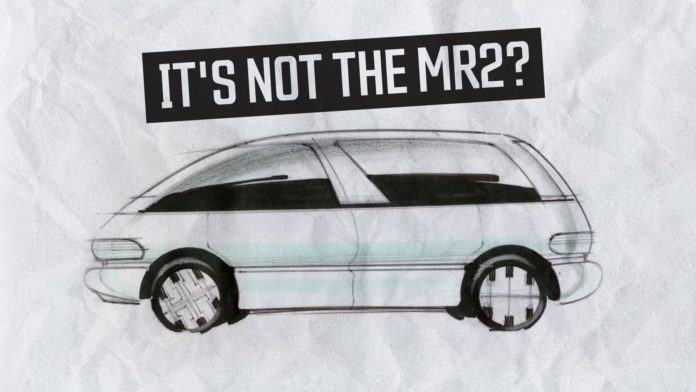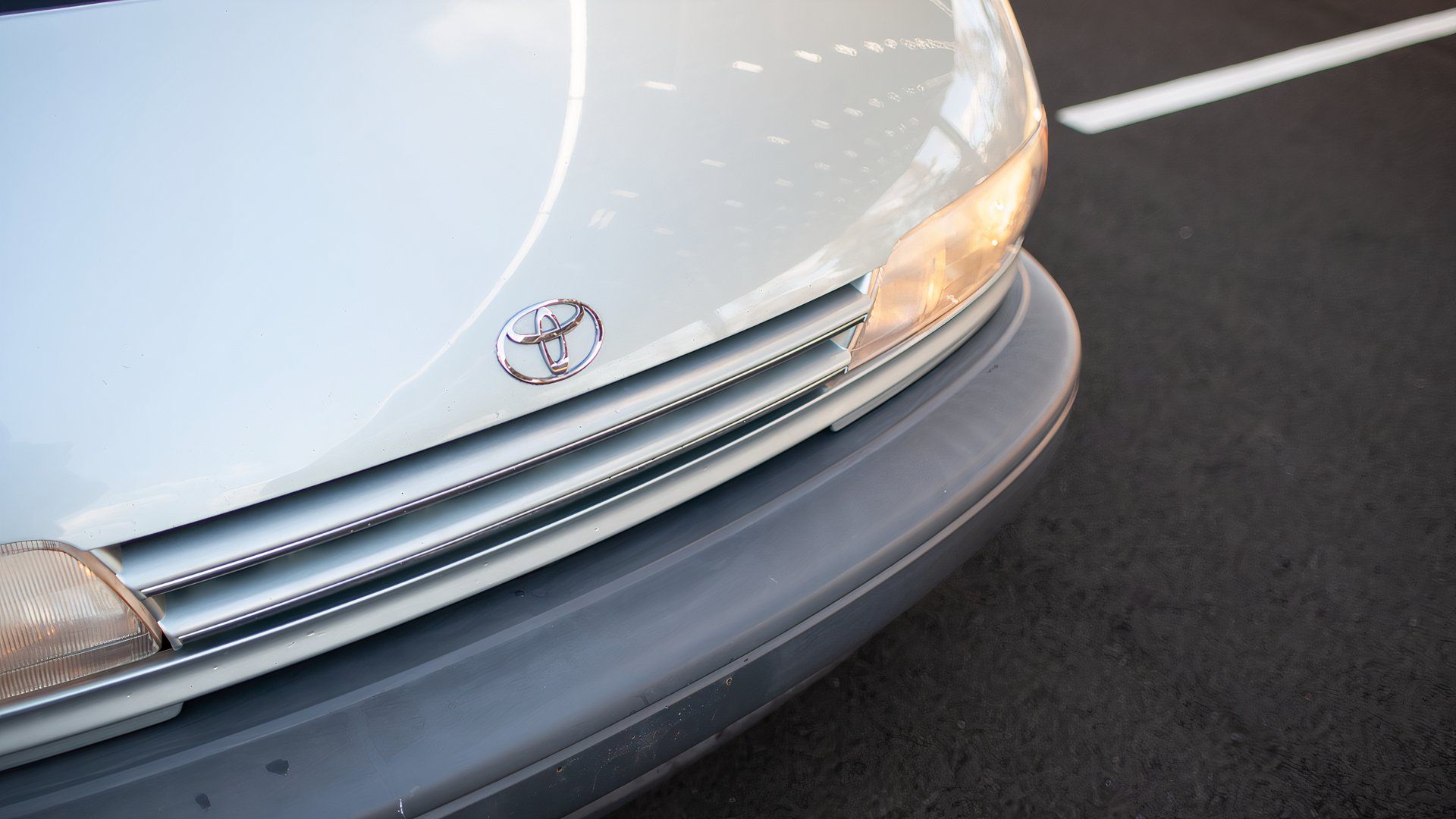It’s almost hard to believe in 2024, but minivans were once a hotly contested segment. Today, these vehicles have largely been overtaken by small and midsize crossovers, but back in the 1990s, minivans like the Aerostar, the Mercury Villager, and the Nissan Quest were the go-to daily drivers for American suburbanites and carpoolers.
So we can dang near guarantee that you forgot all about the Toyota Previa, and we’ll tell you why. One, it’s a minivan. Two, it’s a weird minivan, with a front mid-engine configuration and an intercooled supercharged 4-cylinder engine. And three, it never really managed to threaten its intended rival, the Dodge Caravan. Still, the Previa had a good run in the US before retiring from the American market after its first generation, so here’s everything worth knowing about Toyota’s forgotten front mid-engine minivan.
A Look At The First-Gen Toyota Previa
Launched in Japan as the Estima, in Australia as the Tarago, and in most other regions as the Previa, the first generation of the minivan hit the scene during the 1991 model year. The name is Spanish for “preview,” signaling Toyota’s intentions for the Previa to be a forward-thinking segment leader, showcasing technology and design concepts that would carry minivans into the future. That didn’t exactly come true, but it’s fun to imagine an alternate timeline where it did.
Related
What Is A Supercharger?
How does a supercharger work and why do we use them?
While the Previa would eventually be known as a supercharged, front mid-engine minivan, it got there in bits and pieces (and not all at the same time). The minivan was mid-engine from the start, launching with a naturally aspirated 2.4-liter 4-cylinder engine rated at 138 hp. The engine was placed under the front seats and mounted at a 75-degree angle, and it actually maneuvered like a mid-engine vehicle, with reviewers at the time remarking on how well the AWD All-Trac models handled winding roads and tight turns.
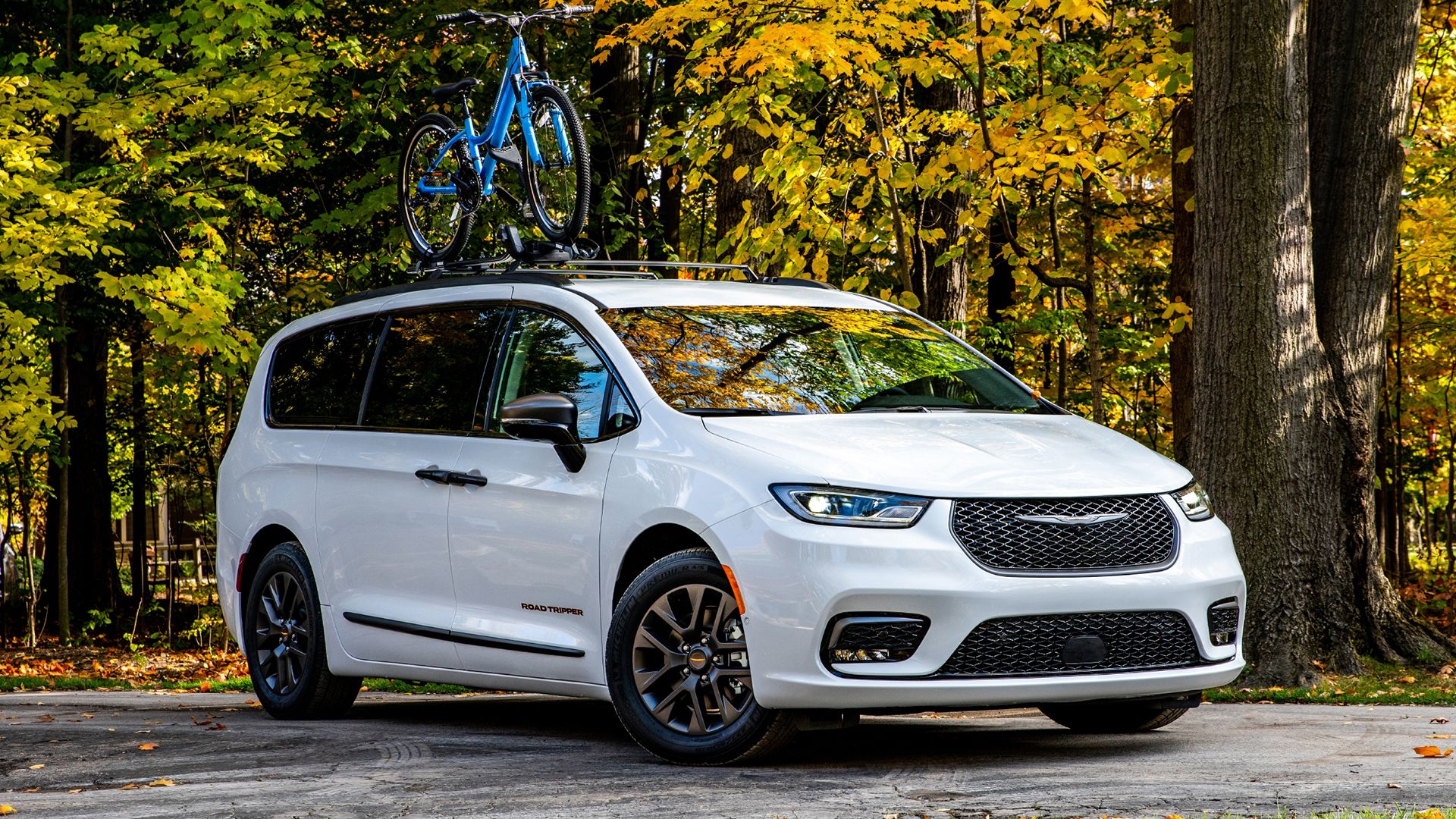
Related
Best Hybrid Minivans Of 2024
These vehicles combine impressive versatility with great efficiency.
For 1994, Toyota added an intercooled, supercharged version of the same engine, bringing the power output up to 161 hp in hopes of competing with the V6-powered minivans dominating the market at the time. Now, the weird thing about the Previa’s supercharger: it wasn’t bolted to the top of the engine. The supercharger found in the Previa relied on a belt connected to the driveshaft, allowing it to operate in the relatively limited confines of a mid-engine minivan without taking up any extra space on top.
An optional 3.0-liter V6 was added in the 2000 model year for the second generation, which never made it to American shores. The V6 was a 1MZ-FE, an engine that had ranked in Ward’s Top Ten for 1996. The version found in the Previa was actually not supercharged, but TRD offered a bolt-on supercharger kit for the Sienna, Solara, and Camry. The V6 cranked out a respectable 220 hp and 250 lb-ft of torque.
The 1994 Dodge Caravan Vs. The 1994 Toyota Previa
The supercharged Previa was launched for the 1994 model year, which would pit it against the mid-cycle revision of the second-gen Dodge Caravan. The Caravan’s body was redesigned for the 1994 model with minor tweaks to the bumpers, and major tweaks to the interior. New seats, passenger side airbags, redesigned dashboards, and the discontinuation of the optional woodgrain paneling make it easy to tell a 1994 Caravan apart from a 1993 model.

Add CarBuzz to your Google News feed.
|
1994 Dodge Caravan 3.3L V6 |
1994 Toyota Previa |
|
|
Engine |
3.3-Liter 6-Cylinder |
2.4-Liter Supercharged 4-Cylinder |
|
Power |
162 hp |
161 hp |
|
Torque |
194 lb-ft |
201 lb-ft |
|
Fuel Economy (combined) |
18 mpg |
18 mpg |
|
Drivetrain |
RWD |
RWD |
|
Transmission |
4-Speed Automatic |
4-Speed Automatic |
The specs listed here are based on the nearest competing models. The 1994 Previa was exclusively supercharged, and optionally RWD, while the Caravan was available in RWD or AWD with multiple engines to pick from, as well as the larger Grand Caravan body type. The Previa and Caravan were both available with a 5-speed manual transmission in their respective first and second generations, as well. But, with the configurations shown here, you can see that the Previa and the Caravan were running neck and neck in terms of the numbers alone.
But that wasn’t enough for Toyota to unseat their Western minivan rival.
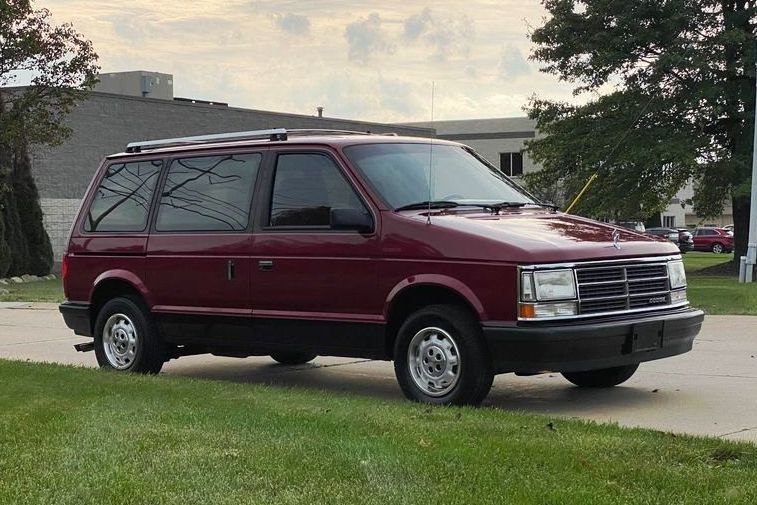
Related
Rare Stick-Shift Dodge Caravan Turbo Is In Mint Condition
This is one special sleeper.
The Previa sold 52,099 units in 1991, with that number generally ticking down every year. In 1994, sales had dipped to 18,005, while the supercharger stemmed the bleeding for a decent 18,234 year-end sales in 1995, before falling to 8,520 the next year, and just 96 units total in 1998. Available sales numbers for the Dodge Caravan only date back to 2002, when the van sold around a quarter million units, and the Dodge nameplate was still going strong until its discontinuation in 2020, when it sold 54,756 for its farewell year. In fact, Dodge sold 25 of them in the US in 2023, and two this year so far. Not bad for a minivan that was “taken off the market” four years ago.
Was The World Ready For A Mid-Engine Minivan?
Was the world ready for a mid-engine minivan? The short answer is no. And the long answer is: we’re still not ready for a mid-engine minivan. A third generation Previa was launched in 2006, with a 2.4-liter AWD hybrid variant for China and Japan, but, like the second-gen Previa, the third-gen model never made it to the US. So, from an engineering standpoint, the Previa didn’t quite live up to its nameplate. Sure, it was innovative, but can you say that a vehicle was “ahead of its time” if its time never came?
Reviewers liked the Previa, buyers who gave it a chance loved it, and it looked weird in a cool sorta way. So why didn’t it take off? It may be the simple fact that minivan buyers aren’t looking for excitement, they don’t care about hairpin-hugging performance, and they generally don’t know why you gearheads get so jazzed about a mid-engine build.
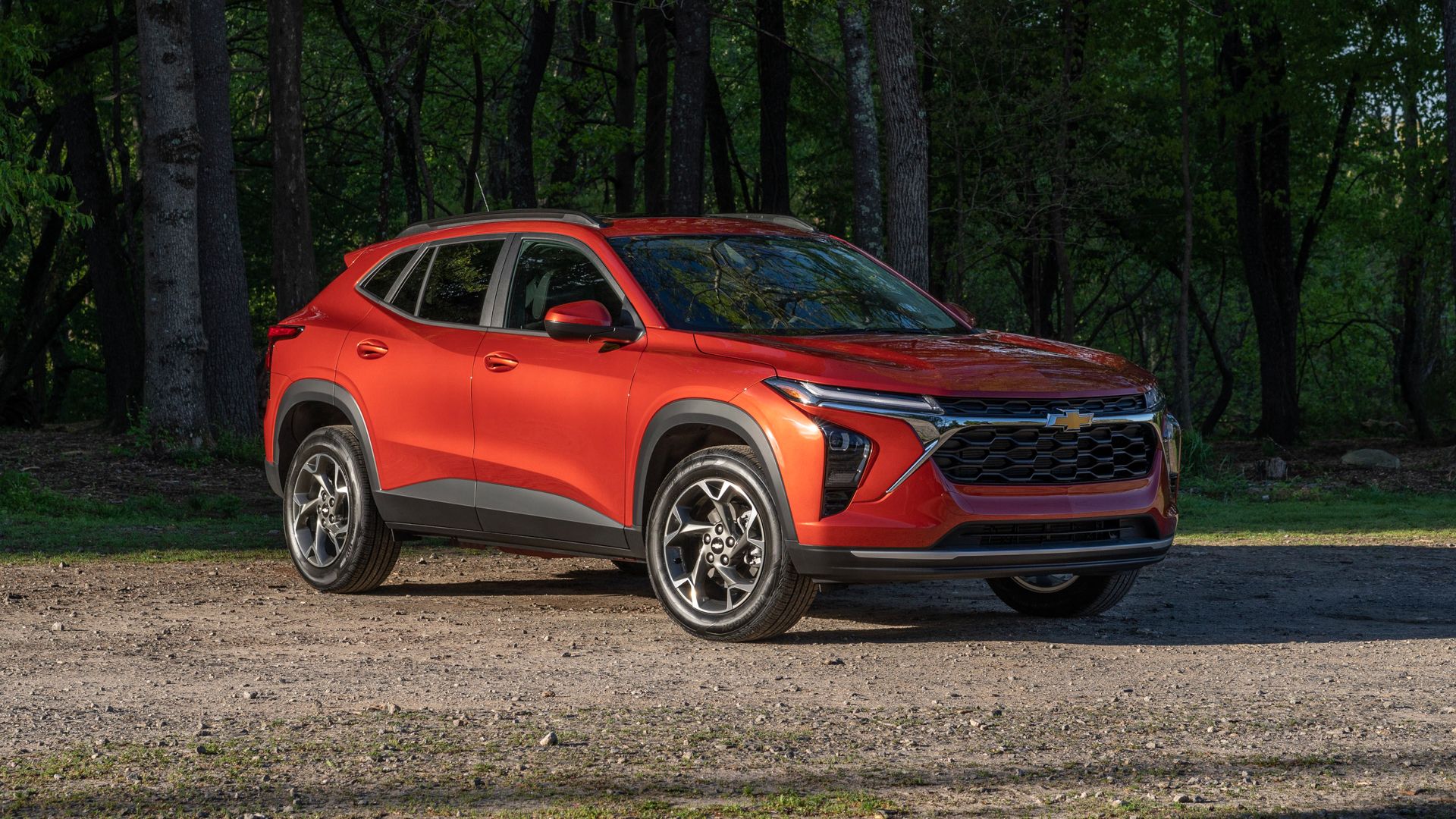
Related
What is the best SUV or crossover for under $26,000?
If you are in the market for an affordable new crossover, there are still some great options in the low $20,000 range. The Chevy Trax is a bargain for just $20,400, and the luxury version, the Buick Envista, is $23,495. What SUV or crossover would you buy for that price, or would you get something used?
The minivan segment has always been oriented around safety, practicality, and familiarity. The Previa’s space-age body design, looking quite a bit like one of those little “runabout” ships from Star Trek, combined with the grippy handling and supercharged i4 engine, not to mention the fact that Toyota was asking drivers to take a chance on an unproven nameplate? That’s not something the average mom or dad in the mid-90s was up for when they were mainly shopping for an errand-runner that wouldn’t complicate their lives. Minivans, like the Chrysler Pacifica, for better or for worse, are cars you don’t have to think about, and that’s not exactly how the Previa fit in.
With all of that being said, you could easily make the argument that, since crossovers and other small-to-medium-sized SUVs have largely displaced the minivan as the de facto family vehicle of choice, the Previa really was ahead of its time. It’s not difficult to find driver-oriented, fun-to-handle mid-sizes like the Mazda CX-5 these days, or Toyota’s own 4Runner. In other words, Toyota had the right idea, they just bet on the wrong segment.
Sources:
FuelEconomy.gov
,
GoodCarBadCar.net

